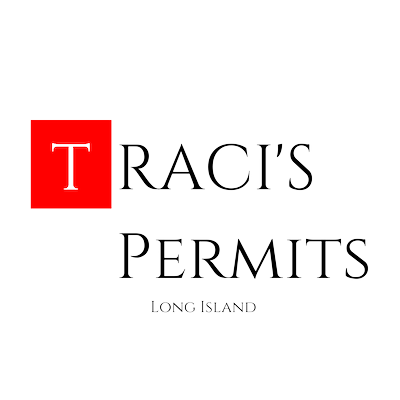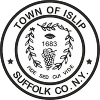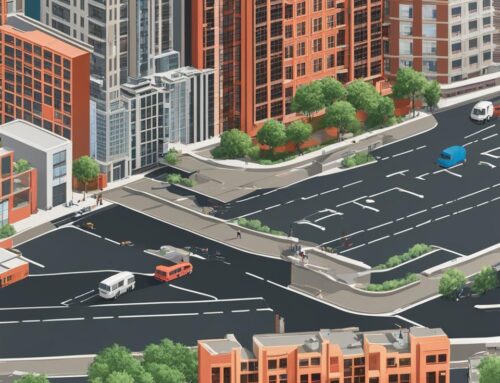Zoning variances play a crucial role in the world of land use regulations, providing property owners with the opportunity to deviate from existing zoning laws. Understanding the legal basis of zoning variances is essential for both property owners and local communities. In this article, we will explore the intricacies of zoning variance regulations, the application process, and the factors that influence the granting of variances.
Key Takeaways:
- Zoning variances allow property owners to use their land or construct buildings in a way that deviates from existing zoning regulations.
- There are two main types of zoning variances: use variances and area variances.
- Obtaining a zoning variance involves submitting an application, paying a fee, and attending hearings and meetings with local government authorities.
- The decision to grant a zoning variance is based on factors such as the impact on neighboring properties and the overall goals of the community’s land use plan.
- Zoning variances can add value to a property and provide owners with more flexibility in land use, but they are not guaranteed.
With a deep understanding of the legal basis of zoning variances, property owners can navigate the process with confidence and ensure compliance with zoning code exceptions and requirements. Contact TracisPermits.com at 631-492-0927 to receive expert guidance and seamless assistance in obtaining zoning variances in Suffolk County, Nassau County, and throughout Long Island.
Understanding Zoning Ordinances
Zoning ordinances play a crucial role in guiding land use and development in specific areas or neighborhoods. These local regulations establish zoning classifications, which determine the types of properties that can be built in different zones, such as residential, commercial, industrial, or agricultural. The primary objective of zoning ordinances is to ensure that land use aligns with the surrounding area and prevents incompatible land uses.
By organizing areas into distinct zoning classifications, zoning ordinances create a framework for controlling and directing development. For example, residential zones may have regulations that restrict commercial or industrial development, preserving the tranquility and character of the neighborhood. Likewise, commercial zones may feature specific requirements that encourage businesses to thrive while maintaining compatibility with neighboring properties.
Governing Zoning Restrictions
Each zoning classification comes with its own set of restrictions that property owners must adhere to when constructing or modifying their buildings. These restrictions can include limitations on building height, setbacks from property lines, lot coverage, and parking requirements. By enforcing these restrictions, zoning ordinances aim to protect the integrity of the area and safeguard the interests of neighboring properties.
Conflicts and Controversies
While zoning ordinances serve a vital function in regulating land use, they can also be a source of conflicts and controversies. Advocates argue that strict zoning regulations uphold property values, preserve neighborhood character, and minimize potential conflicts between land uses. However, opponents contend that inflexible zoning can stifle economic growth and hinder responses to changing socio-economic dynamics within a community.
“Zoning ordinances are a double-edged sword. On one hand, they provide a clear framework for land use control and protection. On the other hand, they can hinder innovation and adaptability, especially when economic circumstances evolve.”
Zoning conflicts can arise when property owners seek to deviate from the regulations outlined in the zoning ordinance. These conflicts can result in zoning controversies, challenging the established order and potentially impacting neighboring properties. However, zoning ordinances do offer provisions for zoning exceptions, such as variances, which grant property owners opportunities to deviate from zoning regulations under specific circumstances.
Zoning exceptions, like variances, provide a mechanism for property owners to overcome zoning obstacles and seek alternative land use options. However, obtaining a variance is not a guarantee, and property owners must meet certain eligibility criteria and demonstrate that the variance will not have a detrimental impact on neighboring properties or the overall character of the area.
Zoning Exceptions
Zoning exceptions, such as variances, are intended to address unique situations that cannot be adequately accommodated within the existing zoning regulations. These exceptions provide property owners with the flexibility to deviate from specific zoning restrictions while maintaining compatibility with the surrounding area.
The decision to grant a zoning variance is typically made by a local zoning board of appeals or a similar authority. These decision-makers carefully evaluate variance applications, considering factors such as the impact on neighboring properties, the history of the site, and the overall goals of the community’s land use plan. The decision-making process aims to strike a balance between providing property owners with necessary flexibility and safeguarding the character and quality of the neighborhood.
While zoning variances can provide property owners with valuable alternatives and opportunities, they can also pose challenges and potential conflicts. It is crucial for property owners to understand the intricacies of zoning ordinances and the potential impacts of seeking a zoning variance before proceeding with an application.
| Pros of Zoning Variances | Cons of Zoning Variances |
|---|---|
| – Increased flexibility in land use | – Potential impact on neighboring properties |
| – Added property value | – Need for comprehensive documentation |
| – Opportunities for unique development | – Community opposition |
Types of Zoning Variances
There are two main types of zoning variances: use variances and area variances. Use variances allow property owners to use their land for purposes that are typically prohibited by the zoning ordinance. For example, a use variance might be granted to construct a commercial building in a residential zone.
Area variances, on the other hand, allow property owners to deviate from physical and dimensional requirements outlined in the zoning ordinance. This might include building additions to a home or placing a fence on a property line. Each type of variance requires property owners to meet specific criteria and demonstrate that the variance will not negatively impact the surrounding area.
Applying for a Zoning Variance
When it comes to applying for a zoning variance, the process can vary depending on the local zoning office. However, there are common steps that property owners need to follow to navigate through the application process successfully.
First and foremost, property owners are required to fill out an application, usually available through the local zoning office or website. This application serves as a formal request for a variance and requires essential information to be provided, such as the nature of the requested variance and how it aligns with the overall goals of the community’s land use plan.
In addition to the application, supporting documentation is usually required to strengthen the case for a zoning variance. For example, property owners may need to provide surveys, site plans, architectural drawings, and any other relevant documentation that supports the necessity of the variance.
Once the application and supporting documentation are prepared, property owners will need to pay a fee, which varies depending on the municipality. The fee covers the administrative costs associated with the review and processing of the application.
After the submission of the application, there may be a community comment period during which members of the public can voice their support or opposition to the variance. This comment period allows neighbors and other community members to express their concerns or thoughts about the proposed variance, ensuring that it takes into account the needs and considerations of the community at large.
The final step in the application process involves the local zoning board of appeals or a similar authority reviewing the application and making a decision. The board will consider factors such as the impact on neighboring properties, the history of the site, and the overall goals of the community’s land use plan. In some cases, property owners may be required to conduct additional studies, such as traffic or environmental impact studies, to provide comprehensive information for the decision-making process.
It’s important for property owners to be diligent in gathering all necessary documentation and ensuring that their application is complete and accurate. This increases the chances of a successful outcome and alleviates potential delays in the process. Seeking professional guidance, such as TracisPermits.com, can also provide expert support and increase the chances of meeting local regulations in Suffolk County and Nassau County.
| Steps in the Zoning Variance Application Process: | Description: |
|---|---|
| Step 1 | Fill out the application form |
| Step 2 | Gather supporting documentation |
| Step 3 | Pay the required fee |
| Step 4 | Participate in the community comment period |
| Step 5 | Review and decision by the zoning board of appeals |
Factors Influencing Zoning Variances
When considering zoning variances, several factors come into play that can influence the approval or denial of the request. These factors include the eligibility of the property for a zoning variance, specific criteria that must be met, the potential impact on neighboring properties, community input, the alignment with the community’s land use plan, and the decision-making process of the local zoning board of appeals.
To be eligible for a zoning variance, property owners must meet certain criteria set by the local zoning regulations. These criteria may include demonstrating a hardship or unique circumstance that justifies the need for a variance. Property owners must also show that the variance will not negatively impact neighboring properties or the character of the surrounding area.
The impact on neighboring properties is a significant consideration in the decision-making process. The local zoning board of appeals evaluates how the variance may affect the immediate surroundings, such as increased traffic, noise, or changes in the visual aesthetics. The board aims to strike a balance between granting variances that promote economic growth and protecting the quality of life of neighboring properties.
“The impact on neighboring properties is an essential factor in deciding whether to grant a zoning variance. We evaluate the potential effects on the community, ensuring compatibility and maintaining the overall character of the area.”
– John Smith, Chair of the Local Zoning Board of Appeals
Community input also plays a crucial role in the decision-making process. Property owners seeking a zoning variance may be required to provide notice to neighboring property owners and hold public hearings where community members can voice their support or opposition to the variance request. The opinions and concerns raised during these community input sessions are taken into account by the local zoning board when making their decision.
The decision to grant or deny a zoning variance is ultimately made by the local zoning board of appeals or a similar authority. They consider all relevant factors, including the impact on neighboring properties, the history of the site, and the overall goals of the community’s land use plan. The board’s decision-making process involves carefully assessing the evidence presented by the applicant and weighing it against the established zoning regulations and community interests.
It is important to note that while zoning variances provide flexibility in land use, they are not guaranteed. The strict regulations are in place to protect property values and maintain the overall character of the neighborhood. Property owners must navigate the complex process, meet eligibility criteria, address potential impacts, and provide compelling justifications to increase their chances of obtaining a zoning variance.
Controversies Surrounding Zoning Variances
Zoning can be a contentious topic, often sparking heated debates and controversies. Advocates argue that zoning preserves property values and maintains the character of neighborhoods. They believe that by regulating land use, zoning protects the interests of property owners and ensures a cohesive community. On the other hand, opponents argue that zoning can stifle progress and limit the ability to adapt to economic changes. They claim that rigid zoning regulations can hinder innovation, economic growth, and affordable housing options.
Zoning variances, in particular, can reignite these controversies. They disrupt the established order by allowing property owners to deviate from existing zoning regulations. This can lead to concerns among adjacent property owners who fear that the changes will negatively impact their property values or the overall character of the neighborhood.
Controversies surrounding zoning variances can sometimes escalate into legal battles. Property owners who feel that zoning ordinances are discriminatory or illegal may challenge them in court. These legal challenges further highlight the tension between property rights and the desire to preserve the character and quality of a neighborhood.
Ultimately, the controversies surrounding zoning variances reflect the ongoing debates about property rights, neighborhood preservation, and the overall impact of zoning regulations on communities. Properly addressing these controversies requires careful consideration of the interests and concerns of all stakeholders involved.
TracisPermits.com is Long Island’s top choice for zoning variances. With expert guidance, seamless applications, and a high success rate in meeting local regulations in Suffolk County and Nassau County, TracisPermits.com can navigate the complexities of zoning variances for you. Call 631-492-0927 today to discuss your zoning needs.
Zoning Variances and Land Use Planning
Zoning variances play a crucial role in the process of land use planning. Land use planning involves guiding the development and growth of a community in a sustainable and compatible manner. Zoning variances provide exceptions to existing zoning regulations, allowing for deviations that align with the overall land use plan and goals of the community.
As part of the land use planning process, zoning amendments may be required to accommodate specific variances. These amendments ensure that the granting or denial of a zoning variance is in line with the long-term vision for the community’s development. Public input and considerations of factors such as transportation networks, natural resources, and compatible land uses are important aspects of zoning amendments.
By incorporating public input, zoning variances can effectively balance the needs of property owners with the desires of the community. This collaborative approach promotes sustainable development and helps prevent conflicts between different land uses. It also fosters a sense of community equity and ensures that all stakeholders have an opportunity to voice their opinions and concerns.
Benefits of Zoning Variances in Land Use Planning
| Benefits | Explanation |
|---|---|
| Flexibility in Land Use | Zoning variances allow property owners to adapt their land use plans to changing circumstances and opportunities, providing flexibility in achieving their goals. |
| Sustainable Development | By considering factors such as transportation networks and natural resources, zoning variances can contribute to a more sustainable development that minimizes adverse environmental impacts. |
| Compatible Land Uses | Through zoning variances, land use planning can ensure that different types of land uses coexist harmoniously, benefiting the community as a whole. |
While zoning variances offer numerous benefits, it’s essential to balance them with potential drawbacks and the impact on neighboring properties. Through careful consideration of compatibility, sustainable development, and public input, zoning variances can enhance land use planning and contribute to the creation of well-planned and vibrant communities.
Potential Benefits and Drawbacks of Zoning Variances
Obtaining a zoning variance can have both benefits and drawbacks. On one hand, a zoning variance can add value to a property and provide the owner with more flexibility in land use. For example, a use variance can allow for the construction of a commercial building in a residential zone, providing potential business opportunities.
However, there can be drawbacks to zoning variances, particularly in relation to the impact on neighboring properties. Zoning regulations are in place to protect property values and the character of a neighborhood, and variances that negatively impact neighboring properties may be denied.
It’s essential that property owners carefully consider the potential benefits and drawbacks before applying for a zoning variance.
| Benefits | Drawbacks |
|---|---|
| 1. Adds value to property | 1. Potential negative impact on neighboring properties |
| 2. Provides flexibility in land use | |
| 3. Allows for potential business opportunities |
Conclusion
In conclusion, zoning variances play a crucial role in providing property owners with the flexibility to deviate from existing zoning regulations. Use variances and area variances are the two common types of zoning variances, each with specific eligibility criteria and considerations. However, the process of obtaining a zoning variance can be complex and involves filling out an application, paying a fee, and engaging in hearings and meetings with local government authorities. The decision to grant or deny a zoning variance is based on various factors, including the impact on neighboring properties, the history of the site, and the overall goals of the community’s land use plan.
Zoning variances can offer benefits such as added property value and increased flexibility in land use. However, it’s important to carefully consider the potential drawbacks and conflicts that may arise with neighboring properties. Zoning regulations are in place to protect property values and the character of the neighborhood, and variances that negatively impact these aspects may be denied. Therefore, property owners should thoroughly assess the implications of a zoning variance before proceeding with an application, ensuring alignment with local regulations.
For expert guidance and seamless zoning variance applications in Suffolk County and Nassau County, TracisPermits.com is Long Island’s top choice. With a high success rate in meeting local regulations, TracisPermits.com provides trusted assistance throughout the zoning variance process. Call 631-492-0927 today to speak with their team and ensure a smooth and compliant zoning variance application.
FAQ
What are zoning variances?
Zoning variances are exceptions to zoning laws that allow property owners to use their land or construct buildings in a way that deviates from the existing zoning regulations.
What are the two common types of zoning variances?
The two common types of zoning variances are use variances and area variances.
How do I apply for a zoning variance?
To apply for a zoning variance, you must fill out an application, provide supporting documentation, and pay a fee. The application will typically require an explanation of the need for the variance and how it aligns with the community’s land use plan.
What factors influence the approval or denial of a zoning variance?
Factors that can impact the approval or denial of a zoning variance include the impact on neighboring properties, the history of the site, and the overall goals of the community’s land use plan.
What controversies surround zoning variances?
Zoning variances can be controversial as they disrupt the established order and can threaten the interests of adjacent property owners. Some argue that strict zoning regulations can inhibit progress, while others believe they are necessary to preserve property values and neighborhood character.
How do zoning variances relate to land use planning?
Zoning variances are closely tied to land use planning, as they provide exceptions to existing zoning regulations. Land use planning guides development and growth in a sustainable and compatible manner.
What are the potential benefits and drawbacks of zoning variances?
A zoning variance can add value to a property and provide more flexibility in land use. However, there can be drawbacks, particularly in relation to the impact on neighboring properties and the character of the area.












